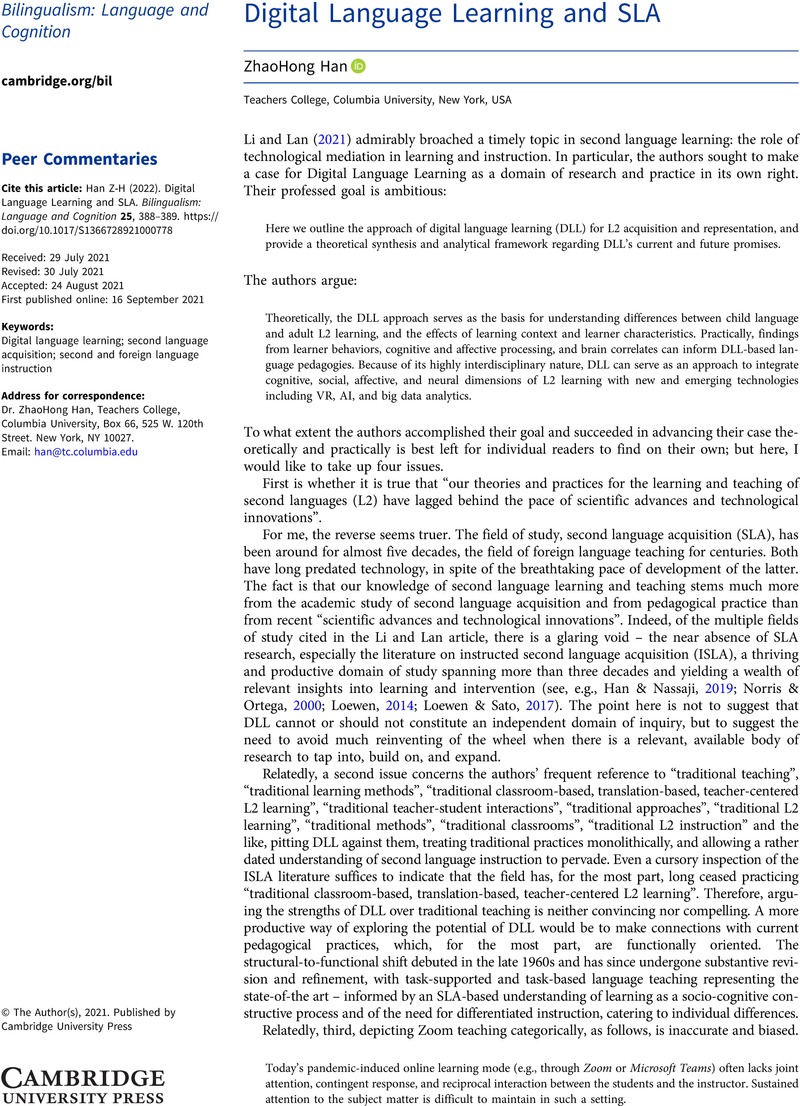Crossref Citations
This article has been cited by the following publications. This list is generated based on data provided by Crossref.
Li, Ping
and
Lan, Yu-Ju
2022.
Understanding the Interaction between Technology and the Learner: The Case of DLL.
Bilingualism: Language and Cognition,
Vol. 25,
Issue. 3,
p.
402.
Lantolf, James P.
and
Xi, Jiao
2023.
Digital Language Learning: A Sociocultural Theory Perspective.
TESOL Quarterly,
Vol. 57,
Issue. 2,
p.
702.





